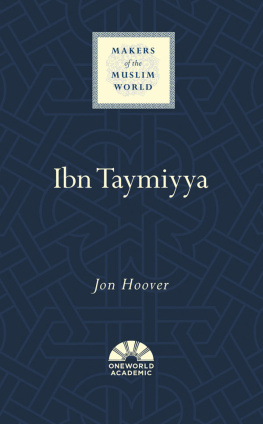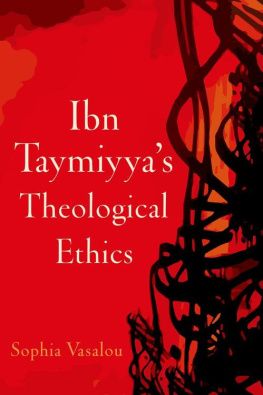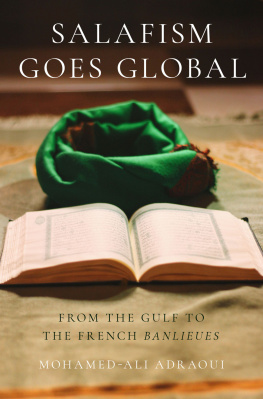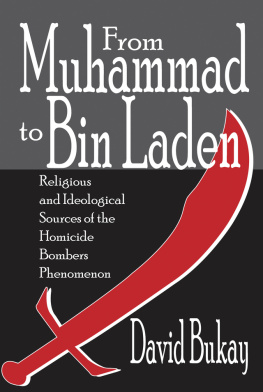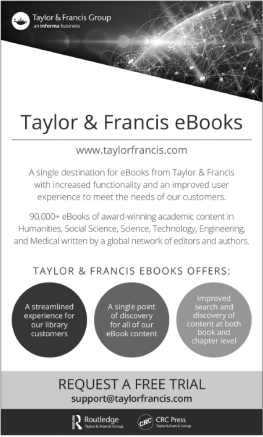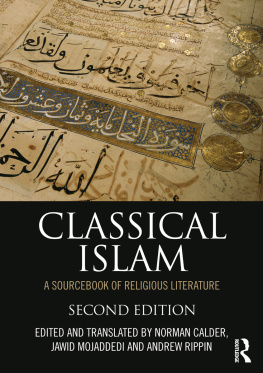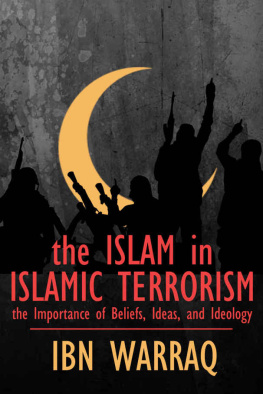
Ibn Taymiyya
TITLES IN THE MAKERS OF THE MUSLIM WORLD SERIES
Series Editors: Professor Khaled El-Rouayheb, Harvard University, and Professor Sabine Schmidtke, Institute for Advanced Study, Princeton
Abd al-Ghani al-Nabulusi, Samer Akkach
Abd al-Malik, Chase F. Robinson
Abd al-Rahman al-Kawakibi, Itzchak Weismann
Abd al-Rahman III, Maribel Fierro
Abd al-Rahman b. Amr al-Awzai, Steven C. Judd
Abu Nuwas, Philip F. Kennedy
Ahmad al-Mansur, Mercedes Garca-Arenal
Ahmad ibn Hanbal, Christopher Melchert
Ahmad Riza Khan Barelwi, Usha Sanyal
Aisha al-Bauniyya, Th. Emil Homerin
Akbar, Andr Wink
Al Mamun, Michael Cooperson
Al-Mutanabbi, Margaret Larkin
Amir Khusraw, Sunil Sharma
Ashraf Ali Thanawi, Muhammad Qasim Zaman
Beshir Agha, Jane Hathaway
Chinggis Khan, Michal Biran
Elijah Muhammad, Herbert Berg
Fazlallah Astarabadi and the Hurufis, Shahzad Bashir
Ghazali, Eric Ormsby
Hasan al-Banna, Gudrun Krmer
Husain Ahmad Madani, Barbara D. Metcalf
Ibn Abd al-Wahhab, Michael Crawford
Ibn Arabi, William C. Chittick
Ibn Tufayl, Taneli Kukkonen
Ikhwan al-Safa, Godefroid de Callata
Imam Shafii, Kecia Ali
Karim Khan Zand, John R. Perry
Mehmed Ali, Khaled Fahmy
Muawiya ibn Abi Sufyan, R. Stephen Humphreys
Muhammad Abduh, Mark Sedgwick
Mulla Sadra, Sayeh Meisami
Nasser, Joel Gordon
Nazira Zeineddine, Miriam Cooke
Sadi, Homa Katouzian
Shah Abbas, Sholeh A. Quinn
Shaykh Mufid, Tamima Bayhom-Daou
Usama ibn Munqidh, Paul M. Cobb
For current information and details of other books in the series, please visit oneworld-publications.com/makers-of-the-muslim-world

For Mark and Yasmin
CONTENTS
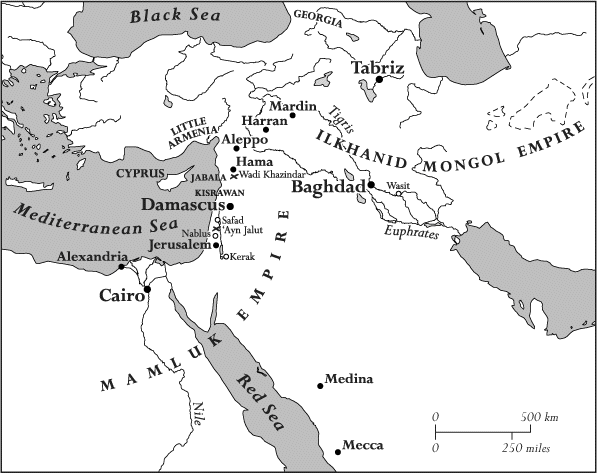
The Middle East in the late thirteenth and early fourteenth centuries
INTRODUCTION
Ibn Taymiyya of Damascus was a famous Sunni Muslim activist, jurist, and theologian. He is well-known as one of the most learned and controversial religious scholars of medieval Islam. He promoted jihad against the Mongol invaders of Syria in the early 1300s, and he challenged the dominant religious beliefs and practices of his day. Ibn Taymiyya believed that weakness in the religious life of the Mamluk Empire of Egypt and Syria had made Muslims vulnerable to invasion by the Mongol hordes from the east. Both the Mongols on the outside and religious decay on the inside had to be fought. The Mamluk elites gladly made use of Ibn Taymiyyas services to the Empire against the Mongols, but they were not always happy to tolerate his interventions in religious affairs. He endured a number of trials and imprisonments and eventually died in a Damascus prison in 1328.
Today, Ibn Taymiyya is both influential and fiercely contested. Advocates of violent jihad from the late 1970s to the present quote Ibn Taymiyya more than any other medieval scholar. Muslim modernists and contemporary revivalists reject the jihadi reading of Ibn Taymiyya and draw on his writings to address the challenges of modernity and globalization. The Arabian Wahhabi and Global Salafism movements look to Ibn Taymiyya to provide the broad outlines of their theology and spirituality. Shiis and many Sunnis blame Ibn Taymiyya for introducing excessive intolerance and theological error into their religion. A few governments have even tried to ban his books.
Ibn Taymiyya is not always what his modern admirers and detractors make him out to be. This book aims to provide a more accurate picture of Ibn Taymiyya through a historical account of his life and thought based on recent research. The first two chapters narrate the events of Ibn Taymiyyas life. They also date his major works and discuss several shorter writings, especially those in conjunction with the Mongol invasions. The subsequent six chapters examine Ibn Taymiyyas thought thematically. Chapters Three and Four focus on his spirituality and his polemic against innovation in religious ritual. The end of Chapter Four considers his relationship to the Islamic spirituality of Sufism. Chapter Five investigates his methodology for deriving the divine law. Chapter Six expounds Ibn Taymiyyas social and political ethics, and the end of the chapter discusses his view of jihad. Chapters Seven and Eight treat his theology. I pause intermittently throughout the book to note how later generations have used and interpreted Ibn Taymiyyas ideas, and I also consider the reception of his thought in a brief epilogue.
Several themes recur in Ibn Taymiyyas life and writings. These include his struggle against innovation in religious practice and theology, his reform-minded appeal to the foundational sources of Islam, his Sunni sectarianism over against Shiism and Christianity, and his apologetic conviction that Islamic revelation corresponds to reason. I have sought especially to bring out the utilitarianism that pervades Ibn Taymiyyas actions, ethics, and theology. Overarching all of these themes, however, is his practical concern that God alone be worshipped and that God be worshipped according to the divine law. Worship as obedience lies at the core of Ibn Taymiyyas mission. Ibn Taymiyya is historically significant because with intellectual power he injected a highly ethicized vision of worship into medieval Islam. His vision had only modest impact in his own time, but it has borne much fruit in later centuries, especially in modernity.
This is the first book-length academic introduction to Ibn Taymiyya in English. The pace of research on Ibn Taymiyya has quickened over the last few decades, and the time is ripe for a synthesis. The main studies used in the writing of this book are listed in the second part of the bibliography. I also had frequent recourse to the Arabic sources to fill in gaps in the research and clarify ambiguities. References for direct quotations and collections of Ibn Taymiyyas works are given in abbreviated form in the text. The key to the abbreviations is to be found in the first section of the bibliography.
I would like to thank Khaled El-Rouayheb for inviting me to write this book and the British Academy for the mid-career fellowship that provided the time to do it. I also extend my deepest gratitude to Emrah Kaya, Jabir Sani-Maihula, Seerwan Ahmed, and Zeynep Yucedogru for their insights on Ibn Taymiyya; to Ali-reza Bhojani, Azhar Majothi, Bill Janzen, Caterina Bori, Hugh Goddard, Jacqueline Hoover, Janice Hoover, Livnat Holtzman, Mohammed Al Dhfar, Mustafa Monjur, Penny Wallace, Yossef Rapoport, and anonymous readers, for commenting on draft material and helping to improve the accuracy and accessibility of the text; and to the editorial team at Oneworld Publications for their expert and professional assistance. Errors that remain are my own.
Next page
